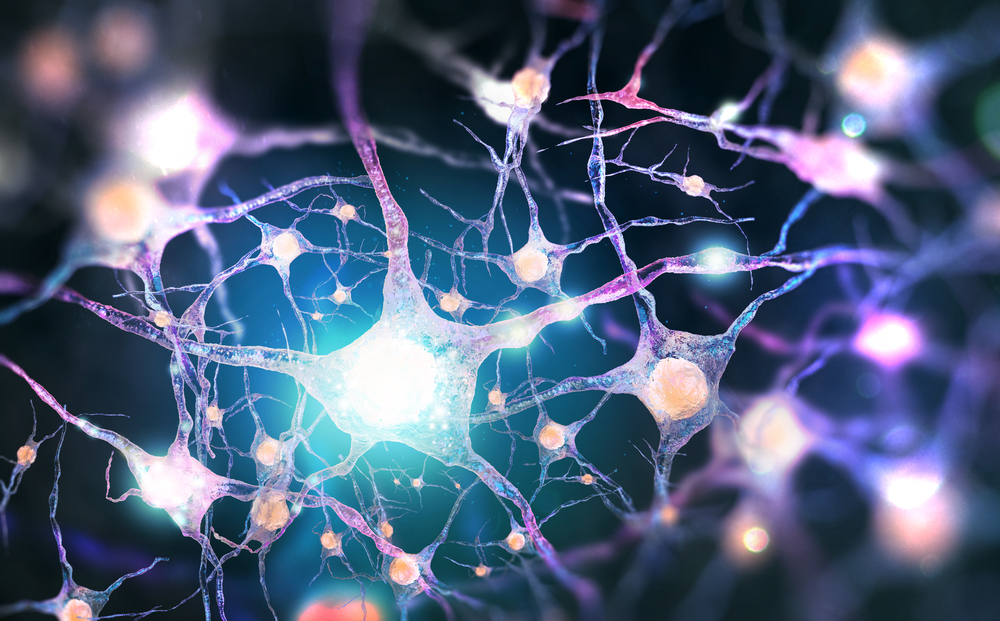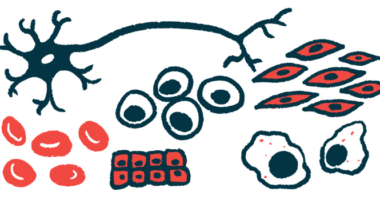Motor Neurons From Patients ‘Powerful’ Way of Spotting Therapies

Andrii Vodolazhskyi/Shutterstock
Using motor neurons derived from people with amyotrophic lateral sclerosis (ALS) is a promising approach to screen for molecules that prevent certain disease mechanisms, and to identify new targets for therapies, according to a recent study.
Two classes of therapies were identified that might lessen the excessive firing of motor neurons in ALS — medications that open the Kv7.2/7.3 potassium channels, and activators of the dopamine D2 receptor.
QurAlis is developing an investigational Kv7.2/7.3 activator, called QRL-101 (QRA-244), which showed potential in preclinical trials. The company plans to initiate a clinical trial in this activator at the end of this year or early in 2022, it said in a press release.
The study describing the company’s approach, “Human amyotrophic lateral sclerosis excitability phenotype screen: Target discovery and validation,” was published in the journal Cell Reports.
Motor neurons in ALS patients, particularly those who carry mutations in the ALS-related genes SOD1, FUS, or C9ORF72, are hyperexcitable, meaning they generate electrical signals more readily than is normal. This excitability is associated with an increased vulnerability to cell death, and occurs in up to half of all patients.
“It is widely believed that by reducing motor neuron hyperexcitability in ALS patients, we may be able to slow the progression of the disease,” said Leonard van den Berg, MD, PhD, chairman of the European Network to Cure ALS.
Recently, the founders of the biotech company QurAlis, working with researchers based at Harvard Medical School in Massachusetts and at Pfizer, developed a large-scale screening platform to identify molecules able to lessen hyperexcitability in individual motor neurons derived from ALS patients.
Motor neurons were grown from induced pluripotent stem cells (iPSCs) generated from patients carrying the SOD1mutation.
iPSCs are stem cells generated from mature cells, either those of the skin or blood, which are programmed to become stem cells and can then originate different types of cells, including nerve cells, depending on the chemical cue provided. As the original cells carry disease-related mutations, the resulting motor neurons will harbor the same mutations, mimicking the genetic makeup of natural motor neurons.
The motor neurons were cultured with mouse glial cells, which provide support to the nervous system but do not generate electrical signals. This allowed the neurons to grow properly and promoted the firing of motor neuron electrical signals.
As the firing of neurons triggers the activation of protein channels that transport calcium ions into cells, researchers used an image-based system to monitor the influx of calcium and to measure neuron excitability.
As expected, ALS neurons showed a more frequent influx of calcium per cell than control neurons, which captured the disease-related hyperexcitability.
“[Calcium] signals in motor neurons can therefore be used to evaluate changes in intrinsic firing of motor neurons,” the team wrote.
Next, to find molecules that modulated hyperexcitability — and to identify a potential therapeutic target — a library containing 2,899 compounds was evaluated. These compounds were known to bind to 1,043 different molecules, including protein receptors, ion channels, enzymes, transporters, gene activation proteins, and other families of essential proteins.
Of the 2,899 molecules, 242 lowered calcium influx and 89 raised it, with most showing similar effects at six and 24 hours. A confirmation screen identified 84 molecules that decreased calcium activity, and 22 that increased it.
Additional testing for compounds with a potent dose-response and without toxicity found 67 that effectively reduced ALS motor neuron hyperexcitability.
Finally, a comparison of the protein targets to the 67 final compounds identified 13 potential therapy targets. Of these, seven belonged to two classes: inhibitors of AMPA receptors, and activators of a protein channel in cell membranes called Kv7.2/7.3, which transport potassium ions in and out of motor neurons to control excitability. It is thought that the low activity of this channel contributes to hyperexcitability in ALS.
These classes were confirmed to effectively decrease SOD1 motor neuron activity. Also, another class of drugs — activators of the dopamine D2 receptor — was identified for the first time as a source of potential new treatments for ALS.
“This study shows that excitability phenotypic screening using patient-derived motor neurons is a novel and powerful method for the identification of drug targets that act on abnormal excitability and offers the potential to produce more effective therapies with fewer side effects,” van de Berg said.
The two compounds that opened the Kv7.2/7.3 channels — ezogabine and flupirtine — were shown to block the firing of human motor neurons carrying various ALS-related mutations in a previous study.
Ezogabine, an anticonvulsant, was also seen to lessen motor neuron excitability in a clinical trial in ALS patients, “validating the action of Kv7 channels in controlling human motor neuron hyperexcitability in patients,” the scientists wrote. But this medication’s side effects, which in the trial included fatigue and dizziness, can limit its use.
“Live human-diseased neuronal excitability phenotypic screens are, we conclude, a powerful platform for the identification of disease-relevant and pharmacologically tractable drug targets, one that can be applied to the many neurological diseases characterized by abnormal excitability,” they added.
QRL-101, the QurAlis candidate for its planned clinical trial, may address both motor neuron excitability and treatment tolerability. The company recently reported on early studies showing QRL-101 to be 20 times more potent than ezogabine, without inducing dizziness or fatigue to the extent that ezogabine did in animal models.
“These research results strengthen our hypothesis that the QurAlis selective Kv7.2/7.3 opener, QRL-101 (QRA-244), has the potential to be an effective therapy for patients [with] hyperexcitability induced motor neuron degeneration,” said Kasper Roet, PhD, CEO and founder of QurAlis.
“Previous research has identified Kv7.2/7.3 as an ALS drug target, and the unbiased nature of this screen further emphasizes the importance of Kv7.2/7.3 in ALS motor neuron dysfunction,” he added.







